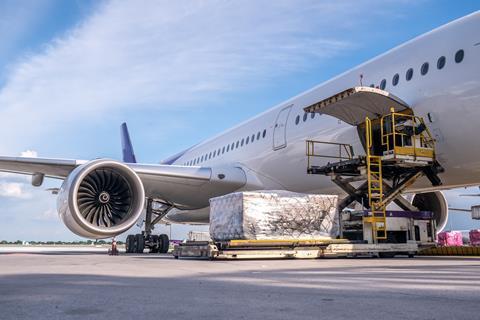When discussing the air cargo sector’s fortunes in recent months, the advice for anyone of a nervous disposition was often to “look away now”.
In broad terms, yields and demand have been on a downward trend since tight airline capacity and shipping disruption during the Covid-19 pandemic temporarily made air cargo many an airline’s financial saviour.

While some air cargo indicators ticked up as 2023 ended, the industry was bracing for declining rates in 2024, as economic indicators continued to suggest a challenging demand environment. At the same time, more belly capacity is returning to the market, particularly in Asia, further alleviating any supply-side tightness and adding to the sense that industry fundamentals are falling back into line with those in 2019.
But air cargo’s lack of control over its own fortunes does not mean it always gets battered by outside factors.
Indeed, speaking at the International Air Cargo Association’s (TIACA’s) executive summit in Brussels in early November last year, Xeneta chief airfreight officer Niall van de Wouw pointed out that, historically, the reliability of shipping is a bigger driver of modal shifts to air – having far more influence than factors such as price (even at the height of Covid, air freight was several times more expensive than shipping) and the environmental impact of different transport modes.
So does the disruption to Red Sea shipping mean air cargo is going to receive a much-needed shot in the arm, particularly on Asia-Europe routes?
There are tentative indications that it might – albeit the full impact is yet to play out and may not endure for long.
Citing the example of significant increases in air freight volumes between Vietnam and Europe in mid-January, Van de Wouw wrote earlier this month: “This is the first signal in Xeneta data that the Red Sea crisis is impacting air freight.
“This is typically a quieter time of year for air freight, so to see increases of this magnitude, with higher volumes than at any point in 2023, is significant.”
Fellow data provider WorldACD meanwhile reported in 19 January that “global air cargo tonnages have bounced back in the second week of 2024 following their typical slowdown in the second half of December and the first week of January… including double-digit percentage increases in demand to Europe from Asia Pacific and from the Middle East and South Asia in the last two weeks that may reflect some modal shift to air due to disruptions to shipping in the Red Sea”.
Meanwhile, logistics providers such as Kerry Logistics are reporting higher interest in sea-to-air services, where freight is transported from Asia by sea to a port such as Dubai or Los Angeles, then flown on to another destination in Europe, for example.
The air freight sector is, however, some way off celebrating a sustained resurgence.
“While an uptick in volumes on the air freight side has been visible, a tsunami-like volume surge has not been the case,” said freight forwarding specialist Scan Logistics Global earlier this month. “It is though expected that this will gradually increase, considering that the challenges in the Red Sea by now are considered longer lasting.”
As that plays out, more data on the impact of the Red Sea situation will become available in the coming weeks.
















